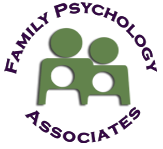Basic Training for Life (a metaphor for raising children)
By Ken Fate, MS, LMHC
I once asked my father why he made us work so much and had so many rules. He said, “Well, I wanted you to not like it here so much that you would want to come back and stay.” He was saying this tongue in cheek, but he helped me separate from the family and prepare for life. I loved home but was trained and ready to make my own way.
Metaphors can help teens understand what we do as parents. One that I like is the “Basic Training” metaphor. The act of training a son or daughter for the real world begins in the safety and security of the home. In this “Basic Training” we don’t start the day with revelry or make them march with a 100 pound pack, but we are training them to do battle with the challenges of life. All children need to learn to delay gratification, follow rules, and be responsible. Failure to attain these skills can create teenagers who can’t handle frustration or delay gratification. They may lead to escaping reality, avoid risk taking, becoming dependent and emotional immaturity.
Parents often want to be a parent and a friend. Though teens can appear to be mature adults , they are not. They can be very persuasive, have sophisticated communication skills and lots of friends to support their wishes. Thus, we often get into conversations that lead to conflicts because of faulty reasoning that we must re-explain our limits and they must like our explanations. One of the biggest mistakes we make is using too much talking and too much emotion in the heat of a conflict. Generally, when strong emotion is present
the message is missed and
the emotion (anger) is received, leading to withdrawal, acting out or revenge.
When we involve the teen in decisions allowing their voices to be heard, we respect them. It is more effective to be proactive and discuss our reasons, do our negotiating, and get their input prior to a conflict. When issues do arise we can respect them by reflecting their frustrations with the rules but not giving in. For example, “You are frustrated that your video game time is over and you have to do your homework now?” We should not take on their problem and try to do anything but be supportive and reflect back what they are feeling and why. It shows respect and sends the message that this is not a topic for discussion.
We are not preparing our kids for armed conflict in the U.S. Military. However, we are preparing them for being independent and self-sufficient citizens. When they need you to help them “be all they can be” remember that sometimes you have to help them earn their stripes.
Filed Under: Helpful Articles
